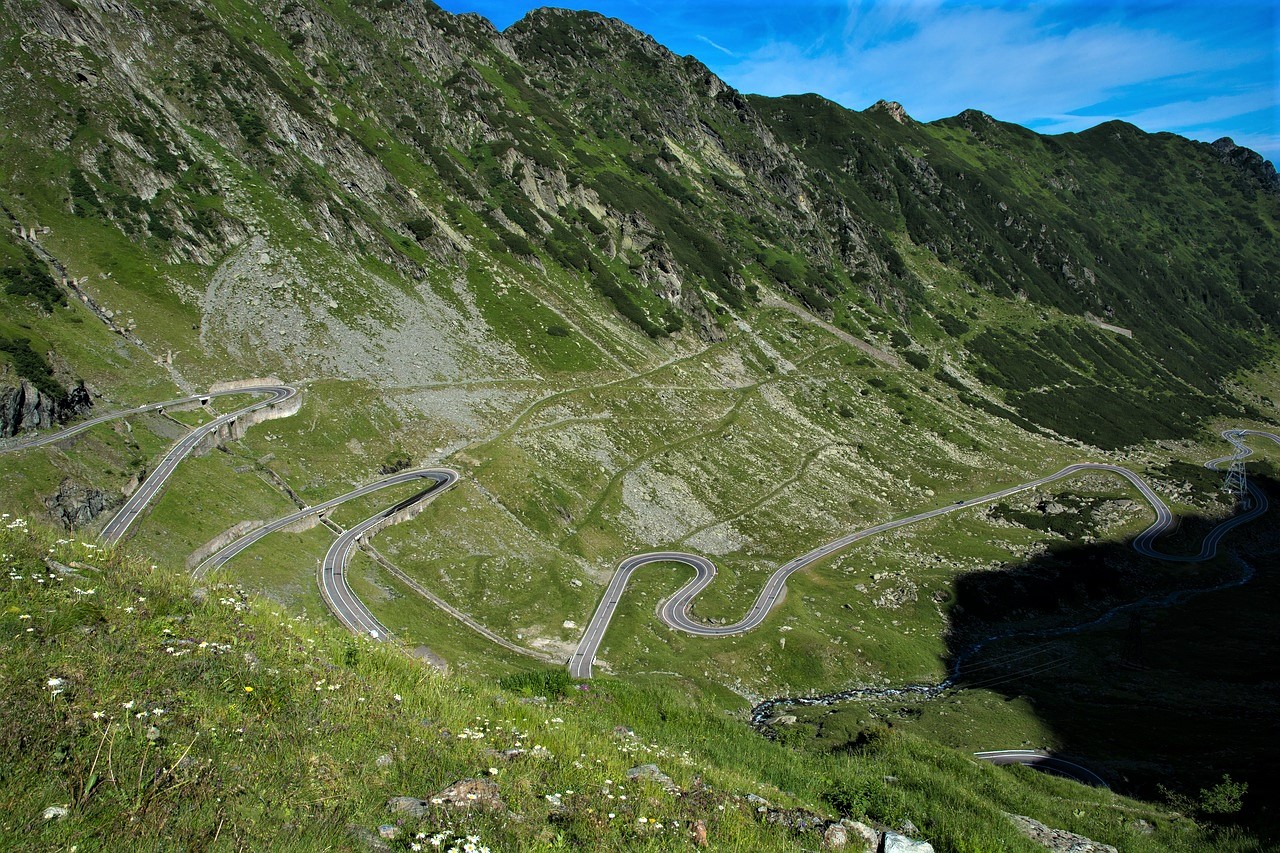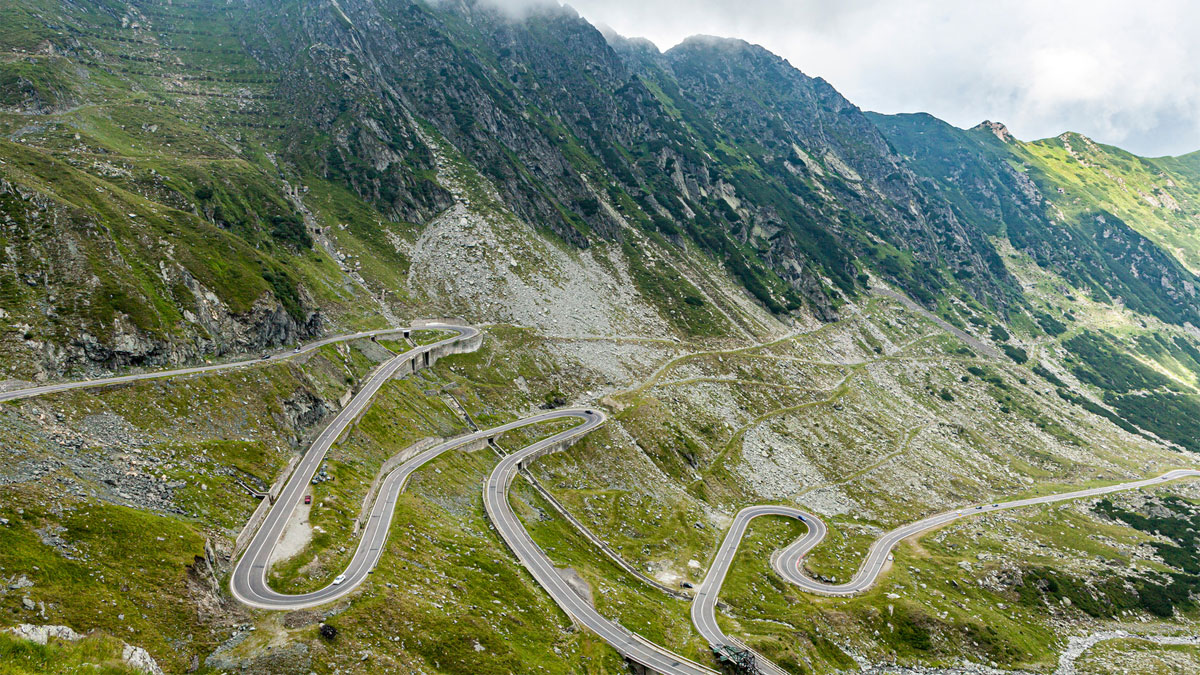Among all the impressive objects built in Romania, the Transfăgărășan was constructed when the communist government was in command, led by none other than the dictator Nicolae Ceaușescu. It is an impressive bit of civil engineering, quite acclaimed for how thrilling and downright gorgeous it is.
In the late 2000s, the people at “Top Gear” went on a road trip to try to understand all the fuss about the Transfăgărășan. They were impressed, to say the least.
Indeed, Jeremy Clarkson, one of the presenters, claimed that the Transfăgărășan is superior and more thrilling than the quite renowned Stelvio Pass. Bold claims and such bold claims require a bit of proof.
Construction of a Carpathian Roadway
Crossing over the tallest mountains in Romania, the Transfăgărășan was built between 1970 and 1974 and spanning 56.5 miles. There were plenty of roads that crossed over the Carpathian Mountains, however, dictator Ceaușescu considered that they could easily be blocked due to weather conditions and landslides.
Therefore, he ordered the emergency development of the Transfăgărășan, built to link the military encampment found in Sibiu to the one in Pitești. On top of this, there were definite plans to develop the Bâlea Lake as a tourist attraction, to establish wood harvesting in the Făgăraș Mountain’s forests, and making use of the available alpine grassland.
Reaching heights of 6,700 feet, the Transfăgărășan is not even the road situated at the highest altitude in Romania. The Transalpina has that distinction as it slightly surpasses 7,000 feet. Another road, the Transbucegi, has its highest point at 6,315 feet.

Considering this, the Transfăgărășan is the second tallest road in Romania, but by far the most spectacular. The road also features the longest tunnel open for road use in Romania, with a length of 2,900 feet along with a 3-foot-wide sidewalk, for some reason.
However, a road like this has proven to be costly, and not just from a material point of view.
The Human Cost
To construct such a spectacular road, 830 small bridges and 27 viaducts were built. Tens of millions of tons of rock were moved by using over 6,500 tons of dynamite. Roadwork was carried out throughout the year, even if you could safely work there for just four or five months annually.
This led to an official death toll of 40 people, due to exhaustion, accidents, or even hypothermia. However, a more recent interview where a site worker, now retired, talks about his experience working on the Transfăgărășan shows a different story. He claims that “only at the reservoir 400 boys or so died”.
The blueprints were dodgy, with the initial plans calling for making the road a single lane with pull-off areas so people could pass, and that was on a completely different route.
The idea was not practical, and a longer route was picked, all the while making the road adhere to the then-current standards: a two-lane road with wider turns and crests. People endured harsh conditions while building the road, working in 8-hour shifts through rain, snow, avalanches, rock falls, and the harshest winds around.
The Drive of Your Life
Driving on the Transfăgărășan is exhilarating and dangerous. Not all the turns are protected by railings, and there are not many sections that have them. Significant driving mistakes can lead to your downfall, figuratively and literally.
There have been plenty of cases where people lost their lives since they were not careful, or they decided to push their car too much when they truly should not have. Therefore, the government decided to keep the road open only from June 30 to November 1 to avoid potential snowfalls and ice formations.
If you want to visit Bâlea Lake, there is a cable car which climbs there, so it is not completely isolated. The road is also closed at night. There are not many road signs around, and the risk of being blinded by someone’s headlights is significant. As such, they decided to keep the road closed between 10 p.m. and 6 a.m.
Unique Twists and Turns
Despite these challenges, the Transfăgărășan is nothing but a matter of beauty. The turns are laid out in such a way that they seem transposed from renowned racetracks. There is not a particular section of the road that seems like a repeating section. The hairpins are carefully laid out and made with different radii, making each turn seem novel and inspiring.
While descending on the best asphalt Romania has probably ever seen, you are accompanied by waterfalls, rock formations, small bridges, rivers of different sizes, and the breathtaking Făgăraș Depression. You take this all in while you’re gripping the wheel tightly, knowing that a mistake can lead to your untimely demise.
You will exit out of turns accelerating and wanting to push your car to its limits while entertaining second thoughts and reaching the more sensible conclusion of slowing down. Such a thought pattern will repeat itself time and again.
Until you reach the road’s end, safe and sound, while still feeling that you could have driven faster and pushed harder.
The Prize of Romania
You will be in awe of what a view you just experienced, wondering if you ever saw so many pines in your life but questioning why there are not more. In the end, you will meet again the same rough roads, watermelon-sized potholes, horse-drawn carriages filled with lettuce, and drivers who cannot signal when entering a roundabout.
In the end, you are left pondering how such a road exists, in Romania of all the places. Why this discrepancy is possible also comes to your mind. But what remains is this enormous desire to climb back up, slowly and surely descend, just like a small kid with a sled who found the perfect snowy hill.
References
- Top Gear. The GREATEST Driving Road in the WORLD | Top Gear. [Online].
- Romania Tourism. Romania’s Scenic Drives: Transfagarasan ( Route # 7 C or DN 7C ). [Online].
- jurnalul.ro. Maruntaiele Fagarasului. [Online].
- Romania Libera. Ultimii santieristi de pe Transfagarasan. [Online].
See Also – Why Do Automakers Care So Much About Nürburgring Nordschleife?
- What Are Radial Tires? - Aug 22, 2023
- What is the Coefficient of Drag? - Jun 7, 2022
- 6 Signs of Steering Rack Failure - May 27, 2022


